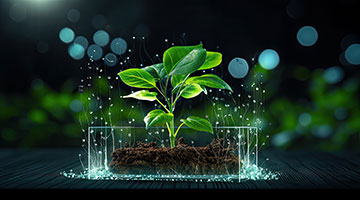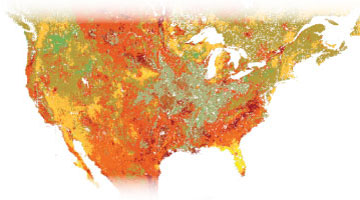We Are Here to Help
Find your answer in our collection of resources and tools designed to deliver more of what you need.
Latest on Fertilizer Agronomy

Role of Fertilizer
This article covers basic soil makeup including primary and secondary plant food elements as well as micronutrients.

Yankee Fork River Restoration
Learn more about this collaborative ecological restoration project in central Idaho.

Nutrient Absorption Basics for Soil and Plants
Read about the principles of soil composition and how nutrients benefit plants in many conditions.
Subscribe to Our Newsletter
Mine to Market
See how Simplot mines and manufactures millions of tons of phosphate fertilizer that helps Bring Earth’s Resources to Life.
The Right Time for Nutrient Stewardship is Now
Simplot is committed to caring for the land and its natural resources. 4R Nutrient Stewardship is a holistic, science-based philosophy around crop nutrition that helps farmers produce a successful harvest while improving the land they farm. 4R Nutrient Stewardship is about using the right amount of the right fertilizer at the right time in the right place so the plant and soil can benefit the most without waste.
Frequently Asked Questions
What is fertilizer?
There are 17 elements that are known to be essential for plant growth and development. Fertilizers (also called plant food elements) are materials produced to supply these elements in a readily available form for plant use. Three of the 17 essential elements, carbon, hydrogen and oxygen, are taken primarily from the air and water. Oxygen and hydrogen are obtained by plants from water. Carbon and hydrogen are taken in by the leaves from the air. The other 14 elements utilized by the plant must come from the soil or from added fertilizer materials. (Nitrogen, Phosphorus, Potassium, Sulfur, Zinc, Iron, Boron, Magnesium, Manganese, Molybdenum, Copper, Calcium, Chlorine, Nickle) Crop removal of these elements, plus leaching, volatilization and erosion causes the soil fertility to be continually reduced. Plants will have poor color (yellow-green to yellow), poor plant density allowing weed invasion and low plant vigor which increases plants susceptibilities to disease and insect damage. Soil productivity can be maintained by well managed, scheduled applications of multiple element fertilizers.
What are macronutrients?
For plants, macronutrients are essential for growth and overall plant stability. The primary macronutrients are Nitrogen (N), Phosphorus (P), and Potassium (K). Nitrogen is essential for plant development, since it plays a fundamental role in energy metabolism and protein synthesis. Phopshorus is involved in root growth. Potassium is involved in the regulation of water and the transport of the plant's reserve substances.
What are secondary nutrients?
Secondary nutrients are those that are still necessary for plant growth- Calcium (Ca), Magnesium (Mg), and Sulfur (S) - just in smaller amounts than macronutrients.
What are micronutrients?
Though micronutrients don’t make the same immediate impact to plant health as the macro and secondary nutrients, they are a key to achieve full balanced nutrition for plants. Plants may only need a small amount of a micronutrient, but a deficiency in the soil can still make a big difference in yield and overall plant health. These include Boron (B), Zinc (Zn), Iron (Fe), Copper (Cu), Manganese (Mn), Molybdenum (Mo), Chlorine (Cl).
What does the analysis mean?
A fertilizer 16-6-8 analysis adds up to 30% plant food or 30 pounds per hundred pounds of material. What is the other 70%? It is not a filler; it is the way the plant food is chemically compounded so plants can utilize it. Plants can’t use elemental nitrogen (N), they only take up nitrogen when it is in the NO3 or NH4 form. This means that for each part of nitrogen you have three parts of oxygen with (NO3) or four parts of hydrogen with (NH4). When nitrogen is in a compound which is available to plants, nitrogen is only part of the compound. The same is true with phosphorus and the other elements. Phosphorus is absorbed by plants as H2PO4–, HPO4 = or PO4 = depending upon soil pH.
Didn’t find the answer to your question? Ask us below:
Contact Form
J.R. Simplot Company
MAILING ADDRESS
P.O. Box 27, Boise, ID
83707-0027
PHONE
(800) 331-6789




